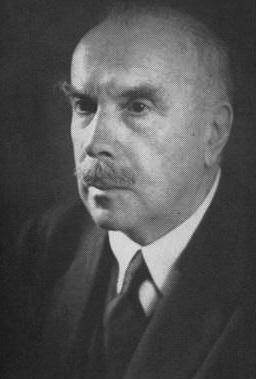Arthur Haberlandt studied anthropology, ethnology and prehistory at the University of Vienna, obtained his doctorate in 1911 and habilitated in 1914 with a paper on the drinking water supply of primitive peoples. That same year he was appointed as a lecturer in ethnography in the Philosophy Faculty of the University of Vienna. During the First World War he was a member of the Balkan expedition in 1916, which he used for the benefit of the Museum für österreichische Volkskunde (Museum of Austrian Folk Art) and his own academic career. In 1918 he was made a research assistant and assistant curator and in 1920 curator of the Museum für Volkskunde (Museum of Folk Life and Folk Art). In 1924 he succeeded his father Michael Haberlandt as director of the museum and secretary general of the Verein für Volkskunde (Folklife Society). In the 1930s, particularly from 1933/34, Arthur Haberlandt was involved as director of the nationales volkskundliches Museum in cultural policy. Folk life and the Museum für Volkskunde attracted increasing political attention at the time, as they were helpful to the Austrofascist rulers in developing a specifically "Austrian ideology".
After the annexation of Austria to the German Reich in March 1938, Haberlandt, as editor-in-chief of the Wiener Zeitschrift für Volkskunde, enthusiastically welcomed the "return to the Reich" and placed his museum and the folklife publication in the service of the Nazi regime. The museum benefited from the financial support of the Nazi state, in particular for new acquisitions. Items from the collections expropriated from Jewish owners were taken over by the museum, mostly in 1938 and 1939. It helped that the Volkskundemuseum and Arthur Haberlandt knew some of the victims, such as Anna Mautner, widow of Konrad Mautner. Working closely with the Zentralstelle für Denkmalschutz (Central Monument Protection Authority), between July 1938 and February 1939 the director gradually managed to transfer objects and archives from the Mautner collection to the museum. When the Second World War started, Haberlandt was able to expand his activities as a museum expert and academic to eastern Europe. In November 1939 he was in Kraków and Warsaw on behalf of Kajetan Mühlmann together with other museum experts to inspect objects and collections seized from Polish museums and to recommend measures for their storage or transport to the "Altreich". In November 1941 he was in Kraków for the first time on behalf of the Einsatzstab Reichsleiter Rosenberg (Reichsleiter Rosenberg Task Force) (ERR), where he catalogued looted folklife collections. In 1943 he was promoted to Obereinsatzführer in the ERR. Apart from his functions there, Haberlandt was able to continue his academic research, published articles and gave lectures. For the Deutsches wissenschaftliche Institut (German Scientific Institute) in Belgrade he published his lecture on German and south-eastern European folklife, which he had given in Belgrade in September 1943. Thanks to his good contacts with Nazi offices, he was able to arrange the unbureaucratic transfer of folk art objects from occupied Greece to Vienna in 1944, including objects from Mount Athos, which were inventoried the same year.
After the war, although a former member of the NSDAP, he was able to continue his involvement in museum policy, corresponded with authorities and dismissed his colleague Robert Mucnjak for membership of the NSDAP, pursuant to a decree by the Staatsamt für Volksaufklärung (State Office for Public Enlightenment). He emphasized to the authorities his efforts to safeguard the collections in the last days of the war and suggested that the museum be renamed Österreichisches Museum für Volkskunde (Austrian Museum for Folk Life and Folk Art) and declared his "unrestricted support for the Republic of Austria". At the same time he took an interest in the now "ownerless library" of the Nazi Forschungsstelle für Mythenkunde (Mythology Research Department). But it was his successor Heinrich Jungwirth who managed to have the mythology library transferred to the museum in 1946. Haberlandt was relieved of his position as director on 26 October 1945 by the Ministry of Education. Now without any research positions, he turned to writing until his death in 1964. The systematic provenance research in the museum shows that the contents of the mythology library are owned by the state. On the basis of a 2019 loan agreement with the Verein für Volkskunde, the books remain available for research. There are provenance problems, since some of the books have the stamp ERR. The acquisitions from Mount Athos were first addressed and presented in an exhibition heimat:machen – Das Volkskundemuseum in Wien zwischen Alltag und Politik (2017). The Volkskundemuseum returned the objects from the Mautner collection to the legal successors of Anna Mautner in response to the recommendation by the Art Restitution Advisory Board in 2016.

